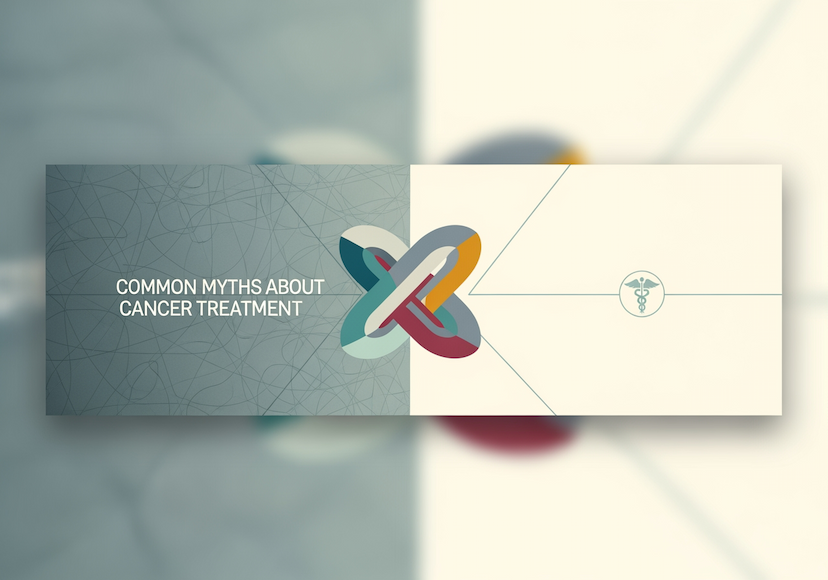
Combination Therapies: The Multifaceted Approach to Liver Cancer Treatment
24 Nov, 2023
Liver cancer stands as a formidable adversary within the oncological landscape, necessitating a nuanced and innovative treatment approach. In recent years, the focus of the medical community has shifted towards a strategic paradigm known as combination therapies—a synergistic amalgamation of diverse treatment modalities. This article aims to delve into the intricacies of combination therapies, shedding light on their multifaceted nature and their potential to redefine the treatment landscape for liver cancer.
Most popular procedures in India
In the pursuit of effective treatments for liver cancer, it is imperative to acknowledge the intricate nature of this disease. Predominantly hepatocellular carcinoma (HCC), liver cancer often emerges within the context of chronic liver diseases, including cirrhosis. Factors such as viral infections, alcohol abuse, and non-alcoholic fatty liver disease contribute to the development of this complex and challenging malignancy.
Wellness Treatments
Give yourself the time to relax
Lowest Prices Guaranteed!

Lowest Prices Guaranteed!
Combination therapies
Combination therapies, in the context of liver cancer treatment, refer to the simultaneous use of multiple treatment modalities to target cancer cells from different angles. These modalities can include surgery, chemotherapy, immunotherapy, targeted therapies, and radiation therapy, among others. The goal is to enhance the overall effectiveness of the treatment by capitalizing on the synergies between different approaches, thereby increasing the chances of successfully combating the complex nature of liver cancer.
When is Combination Therapy Needed for Liver Cancer?
Combination therapy becomes a compelling option when facing liver cancer, especially in scenarios where the complexity of the disease demands a multifaceted approach. It is often considered when:
1. Advanced Stage Diagnosis: Combination therapies are frequently recommended when liver cancer is diagnosed at an advanced stage, where a single treatment modality may not be sufficient to effectively combat the disease.
2. Tumor Size and Location: Larger tumors or those situated in challenging locations within the liver may necessitate a combination of treatments to optimize both local and systemic control.
3. Underlying Liver Conditions: In cases where liver cancer arises from chronic liver conditions such as cirrhosis, combination therapies may be employed to address both the cancer and the underlying liver disease.
4. Resistant or Recurrent Cases: If liver cancer demonstrates resistance to single-agent therapies or experiences recurrence, combination approaches become crucial to overcome adaptive responses and maintain treatment efficacy.4
Who benefits from Combination Therapies?
Individuals diagnosed with liver cancer, particularly those with advanced stages or tumors that are not amenable to surgery alone, may benefit significantly from combination therapies. This includes patients who have undergone surgery and need additional measures to prevent recurrence or those with tumors that display resistance to single-agent treatments. The decision to utilize combination therapies is made on a case-by-case basis, considering the unique characteristics of each patient's cancer and overall health.
The Multifaceted Symphony of Combination Therapies:
Combining Strengths for Comprehensive Liver Cancer Treatment
In the intricate landscape of liver cancer treatment, the emergence of combination therapies represents a harmonious blend of diverse medical strategies. This multifaceted approach, akin to a symphony of precision, orchestrates various modalities to address the complexity of liver cancer comprehensively.
1. Surgery and Targeted Therapies:
The first movement in this therapeutic symphony involves integrating surgical finesse with targeted precision. Surgical interventions, such as tumor resection or liver transplantation, are harmoniously combined with targeted therapies. These therapies disrupt specific molecular pathways responsible for cancer growth. This dual approach not only addresses the physical presence of the tumor but also targets the underlying molecular mechanisms, striving for a more holistic and effective treatment outcome.
2. Immunotherapy and Chemotherapy:
In the second movement, we witness the powerful synergy between harnessing the body's natural defenses and directly confronting cancer cells. Immunotherapy, a conductor of the body's immune symphony, is orchestrated alongside chemotherapy, the direct assailant of cancer cells. This dual strategy amplifies the impact on tumor cells, leveraging the immune system's prowess to complement the precision of chemotherapy. The result is a comprehensive assault on cancer, fostering a dynamic and adaptive treatment response.
3. Radiotherapy and Molecularly Targeted Agents:
As the symphony progresses, radiotherapy takes center stage, finely tuned with molecularly targeted agents. This combination maximizes the local effects of radiation while sparing healthy tissues. The targeted agents specifically address molecules implicated in cancer progression, enhancing the precision of the radiotherapeutic assault. This meticulous approach aims to strike a delicate balance, optimizing the destruction of cancer cells while minimizing collateral damage to surrounding tissues.
4. Chemoembolization and Radiofrequency Ablation:
The fourth movement introduces a crescendo of locoregional therapies. Chemoembolization, akin to a precise delivery of therapeutic notes, transports chemotherapy directly to the tumor. Simultaneously, radiofrequency ablation provides a symphony of heat, destroying cancer cells. This synergistic approach orchestrates a comprehensive and harmonious attack, targeting tumors from multiple angles. The result is a thorough and synchronized assault on the cancerous elements within the liver.
5. Precision Medicine and Personalized Treatment Plans:
The final movement unfolds with the elegance of precision medicine and personalized treatment plans. This segment of the symphony tailors treatment regimens based on the unique genetic and molecular characteristics of each patient's cancer. Precision medicine, the conductor of individualized care, enables a targeted and effective approach. By minimizing side effects and maximizing therapeutic benefits, this movement accentuates the importance of recognizing the unique nuances of each patient's cancer composition.
In the grand finale, the symphony of combination therapies harmonizes the strengths of surgery, immunotherapy, radiotherapy, locoregional therapies, and precision medicine. This integrative approach holds the promise of not only treating liver cancer but redefining the standard of care, offering a crescendo of hope for those facing the challenges of this formidable disease.
Benefits of Combination Therapies:
1. Enhanced Efficacy: By targeting cancer from multiple angles, combination therapies have the potential to increase treatment efficacy and improve overall outcomes.
2. Overcoming Resistance: Liver cancer cells are notorious for developing resistance to single-agent therapies. Combination treatments can help overcome this resistance and maintain a sustained therapeutic effect.
3. Reduced Side Effects: The judicious combination of therapies allows for lower doses of individual agents, reducing the risk of side effects and enhancing the patient's quality of life during treatment.
Limitations of Combination Therapies in Liver Cancer Treatment:
1. Patient Suitability: The applicability of combination therapies varies, influenced by individual patient health, medical history, and overall suitability for multiple treatments .
2. Complex Management: Coordinating and managing multiple therapies simultaneously adds complexity to patient care, requiring careful oversight and coordination between healthcare professionals.
3. Potential for Increased Side Effects: Combining different treatment modalities may amplify side effects, potentially impacting the patient's well-being and quality of life during the course of treatment.
4. Cost Constraints: Financial considerations pose a limitation, as the expense associated with multiple drugs or procedures may limit accessibility for some patients and strain healthcare budgets.
5. Limited Clinical Evidence: Some combination approaches may lack comprehensive clinical evidence, highlighting the need for ongoing research and clinical trials to establish their long-term efficacy and safety.
Combination therapies signify a pivotal shift in liver cancer treatment, embracing diverse modalities to enhance efficacy and personalize patient care. As research delves into molecular intricacies, the evolving treatment landscape holds promise for improved outcomes, standing at the crossroads of innovation in the fight against liver cancer.
Read more : Combination Therapies: The Multifaceted Approach to Liver Cancer Treatment (healthtrip.com)
Related Blogs

Common Myths About Cancer Treatment Doctors Bust Them
Explore evaluations, innovations, hospital comparisons, and global success insights for

How Healthtrip Coordinates Cross-Border Medical Records for Cancer Treatment
Explore evaluations, innovations, hospital comparisons, and global success insights for

Top Pre-Surgery Tests Required for Cancer Treatment
Explore evaluations, innovations, hospital comparisons, and global success insights for

Why India Leads in Affordable Cancer Treatment Analysis
Explore evaluations, innovations, hospital comparisons, and global success insights for

Patient Satisfaction Scores for Cancer Treatment at Healthtrip Partner Hospitals
Explore evaluations, innovations, hospital comparisons, and global success insights for

How to Choose the Right Hospital for Cancer Treatment Using Healthtrip's Criteria
Explore evaluations, innovations, hospital comparisons, and global success insights for










